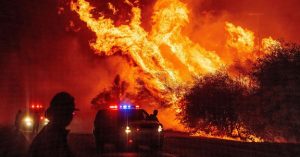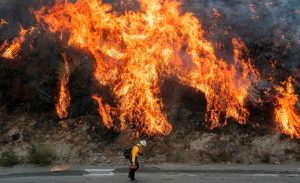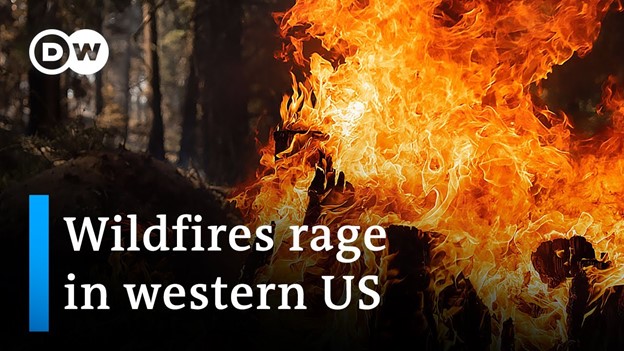
In recent years, the United States has witnessed a significant surge in wildfires, a trend that has caused widespread concern and prompted a closer examination of the underlying causes and potential solutions. As someone deeply interested in environmental issues, I’ve taken the time to understand the multifaceted reasons behind this increase and the broader implications it holds for our ecosystems, communities, and climate change mitigation efforts.
Understanding the Recent Surge in US Wildfires

The recent uptick in wildfire activity across the United States can largely be attributed to climate change and persistently dry conditions. These environmental factors have not only made forests and grasslands more susceptible to fires but have also intensified the scale and ferocity of these events. The increased intensity of US wildfires has placed a significant strain on emergency response teams and resources, challenging our existing firefighting capabilities and necessitating a reevaluation of our preparedness and response strategies.
Factors Contributing to Increased Wildfire Intensity
At the heart of the increased wildfire intensity are prolonged periods of drought and higher temperatures, both of which are linked to climate change. Drought conditions leave vegetation dry and more flammable, creating a tinderbox that ignites more easily and burns more intensely. Similarly, higher temperatures exacerbate these conditions, making it easier for fires to start and spread. This vicious cycle is a direct consequence of our changing climate and underscores the need for immediate action to address the root causes of global warming.
The Role of Climate Change in Wildfire Behavior
Climate change plays a pivotal role in escalating the intensity of US wildfires. The rising global temperatures, a hallmark of climate change, have led to more frequent and severe droughts, creating ideal conditions for wildfires to ignite and spread. This has resulted in a noticeable increase in both the frequency and severity of wildfires, underscoring the profound impact that global warming has on our natural environment. The link between climate change and wildfire behavior is undeniable and highlights the urgent need for comprehensive climate action.
Impact on Ecosystems and Biodiversity
The ramifications of increased wildfire activity extend far beyond the immediate destruction of property and land. US wildfires have a profound impact on ecosystems, endangering native species and reducing biodiversity. The alteration of habitats through fire can lead to the loss of biodiversity, as plant and animal species struggle to adapt to the changed landscape. This disruption in ecosystems can have cascading effects, undermining the ecological balance and the services that nature provides to humanity.
Challenges in Wildfire Management and Containment
One of the greatest challenges in managing and containing US wildfires is the unpredictability of weather patterns. The rapid spread of wildfires, fueled by erratic winds and dry conditions, complicates firefighting efforts and resource allocation. This unpredictability requires a flexible and adaptive approach to wildfire management, one that can quickly respond to changing conditions on the ground.
Community Responses and Evacuation Procedures
In the face of intensifying wildfires, community responses and evacuation procedures have become crucial in mitigating the impacts of these disasters. Effective communication and preparedness can save lives, making it imperative for communities to adapt their response strategies to the evolving nature of wildfire threats. This includes developing more efficient evacuation procedures and ensuring that residents are well-informed and prepared to act quickly in the event of a fire.
Future Projections and Mitigation Strategies

Looking to the future, it is projected that US wildfires will continue to escalate due to the ongoing impacts of climate change. This daunting prospect calls for the development and implementation of advanced mitigation strategies, including enhanced firefighting techniques and more effective forest management practices. By addressing the root causes of increased wildfire activity and investing in innovative solutions, we can hope to mitigate the impacts of these devastating events and safeguard our communities and natural landscapes for future generations.
Conclusion:
In conclusion, the intensification of US wildfires presents a complex challenge that requires a multifaceted response. From addressing the underlying issue of climate change to improving our emergency preparedness and response strategies, it is clear that a concerted effort is needed to combat this growing threat. By working together, we can strive to protect our planet and ensure a safer, more resilient future for all.










